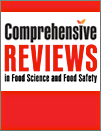FDA Falling Behind in Food Additives Safety Assessment
|
A recent article by Pew experts concludes that the science the U.S. Food and Drug Administration (FDA) uses to assess the safety of food additives has not kept pace with recent scientific developments, and the agency should review and retool its approach to making decisions about the safety of chemicals used in food and packaging in the United States.
Maricel Maffini, Heather Alger and Tom Neltner of Pew's food additives program joined Erik Olson, Pew's senior director for food programs to write “Looking back to Look Forward: A Review of FDA's Food Additives Safety Assessment and Recommendations for Modernizing its Program,” published in July 2013 issue of Comprehensive Reviews in Food Science and Food Safety, a peer-reviewed journal of the Institute of Food Technologists.
The article identifies nine areas of concern raised more than 30 years ago by an FDA-convened committee that are remain relevant and unresolved. Further, the agency has not taken a leadership role in updating guidelines to evaluate behavioral impacts, endocrine disruptors, or effects on children. The agency's practice of allowing food manufacturers to self-declare that a chemical is generally recognized as safe (GRAS) without notifying the agency has limited FDA's role in the decision-making process and inhibited its scientific progress.
The authors recommend that FDA:
- Convenes its Food Advisory Committee to review the process by which chemical additives are assessed for safety and make recommendations; and
- Fixes the GRAS process to ensure that the agency has the opportunity to review and has the final say in all safety safety assessments.










